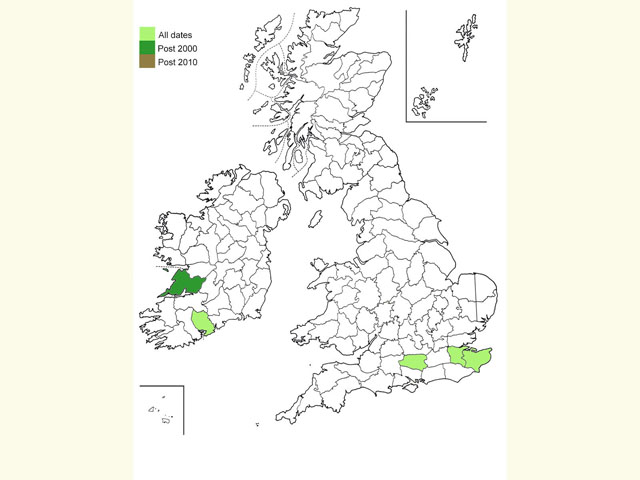Coleophoridae
37.094 Daisy Case-bearer Coleophora ramosella Zeller, 1849
pRDB1
Similar species:
Forewing: 5 to 6mm
Habitats: Woodland rides and limestone pavement, coastal sand-dunes and downland.
Habits: The moth comes to light.
Foodplant: The larva feeds on the underside of the leaves of Goldenrod or Common Daisy on the sand-dunes of the west Irish coast. The larva initially makes a small tubular silk case and feeds on the under surface of the tougher lower leaves of the foodplant. The half-grown larva then overwinters. In the spring it produces brown blotches on the leaves. It expands its case by adding silk at the rear and slitting gussets lengthways and bridging them with silk. It does this about six times. The fully formed pale ochreous-brown case is slender with a slight flange around the mouth opening. It is trivalved and 7 to 9mm long, m.o. at a 20° angle. The larva is full-fed in early June when it pupates in the crevices of limestone pavement or attached to a stem.
On the European mainland it has also been recorded feeding on Goldilocks Aster, European Michaelmas Daisy and hawkweeds.

